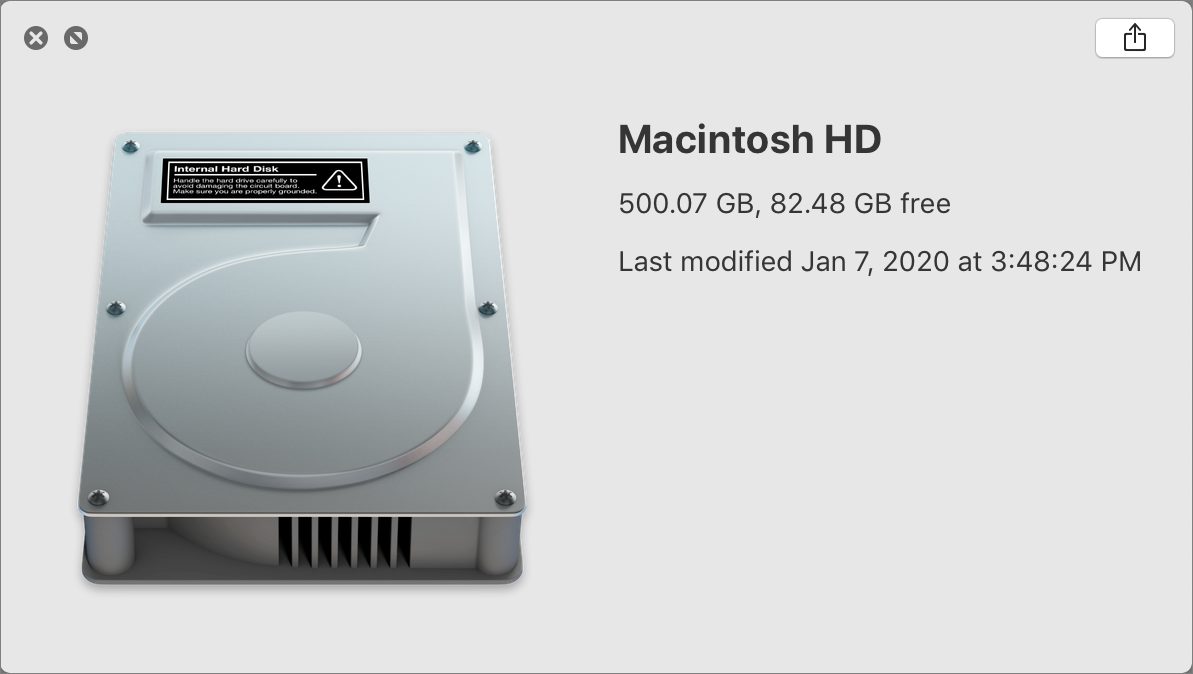Wait for the macOS Utilities screen to appear, then click Disk Utility. Choose your Mac's system drive, usually named Macintosh HD, then click Erase. Select the Format option Mac Extended.
- Just select the root directory of your Mac's hard drive (like Macintosh HD or Fusion HD). Click on the 'Erase' button on the toolbar to get the following window. Here, you can change the scheme and file format of the drive as per your choice.
- Select Macintosh HD in the sidebar of Disk Utility. Don't see Macintosh HD? Click the Erase button in the toolbar, then enter the requested details: Name: Continue to use Macintosh HD as the name, or enter a different name. Format: Continue to use APFS or Mac OS Extended (Journaled), as recommended by Disk Utility. Click Erase Volume Group.
Here is a guide on how to create a bootable external Mac hard drive to run macOS from an external hard drive.
There are quite a few reasons for why you may want to be able to have an additional startup drive for your Mac. One of the main reasons is backup of your current system. Another is creating a drive for testing your Mac's hardware. No matter the reason, having an additional bootable option on an external hard drive is definitely a good tool for any Mac user to have.
How to Make a Bootable External Mac Hard Drive
Apple ios download. Spanish 21 vs blackjack. Here are the steps to create a bootable external volume to start up to on your Mac.

How to Create a Second Boot Volume

How to Create a Second Boot Volume
In order to create another boot volume for your Mac, you will need a form of external storage such as a hard drive. The faster the drive the better and a connection speed like Thunderbolt is preferred. You are going to be utilizing this hard drive, Disk Utility and MaOS installer from the App Store.
If you are running the newest version of Sierra, you will be able to use the Recovery Boot option to launch your installation of MacOS to install it on your external drive. In order to boot to Recovery, restart holding Command and R. You will then choose Reinstall a new copy of MacOS to begin the next step.
If your secondary hard drive was just purchased, you may need to open Disk Utility prior to starting your installation. You will want to ensure that your hard drive is in the proper partition scheme and is available to install to. Many drives purchased from third party retailers may come unformatted or formatted to Windows based schemes like NTFS and FAT32. In Disk Utility you will want to make sure it is set to Mac OS Extended (Journaled).
Unlock Macintosh Hd Password
Upon starting the Install feature of Recovery, you will be presented with the option of choosing which Disk the installer is going to do its work on. You should see your current Macintosh HD and also your external hard drive. Choosing this as your install target should begin the installation process and install MacOS Sierra on your external hard drive. When the machine reboots, it will be booting to your external hard drive where you can set up an account and get to your desktop.
How to Use Your Bootable Mac Disk
Free games with real rewards. Now that you have created a second bootable drive, you are able to plug it in and reboot to it at any point in time. When you wish to do this, plug in the drive and reboot your Mac holding the Option key. Much like you did when installing, you will see your Macintosh HD and your now bootable External Drive show up as options. Clicking the External will start your Mac up on this new volume.
If you have completed the setup process and have an account enabled, the Mac will perform almost identically to how it would using the built-in drive. You are able to install applications on this drive and store media and information as backup or just additional copies. Many users will actually utilize a second hard drive option strictly for work related activities and then use the built-in drive for personal use.
How To Use Macintosh Hdmi Adapter
This method is a safe way to keep a second bootable machine safely on a hard drive in the event of your internal hard drive crashing. You will also be able to test if it is indeed an issue with your hard drive by attempting to boot to your second drive and see if you can reproduce your issue.
Having a secondary boot volume has always been a personal recommendation as it comes in handy when you need a secondary place to separate data or use as a recovery tool in the event of mishaps.
Related Posts
How to apply red matte lipstick. Here is a guide on how to detect Mac malware and safely remove it from…
Like on a PC, most of your Mac's software lives in the same place on…
Here is a guide on how to remote access a Mac from another computer to get…
While you can physically connect a Mac hard drive to a Windows PC, the PC cannot read the drive unless third-party software is installed. Omg casino games. Because the two systems use different file systems for storage: Macs use the HFS, HFS+, or HFSX file systems, and PCs use either the FAT32 or NTFS. Luckily, if the drive type (e.g., SATA, IDE, or SCSI) is compatible with your motherboard, there are a few solutions to this dilemma.
NoteNTFS and FAT drives open natively in macOS.
Macintosh Hd Location
Formatting a partition
You can delete a Mac-based HFS, HFS+ or HFSX partition and format it to be usable with a PC. If there are any files you want to keep, copy them from your Mac hard drive to another storage device, then review the page linked below.
Third-party software
Through the use of third-party software, Microsoft Windows can be configured to read a Mac hard drive. Free programs are available, but they have fewer features and are not as easy to use. One of the best free programs is HFSExplorer. If you are willing to pay, MacDrive and TransMac cost about $50. They do a good job of allowing users to view the contents of a Mac hard drive on a PC due to their user-friendly interfaces. There is also a $20 solution from Paragon called HFS+ for Windows.